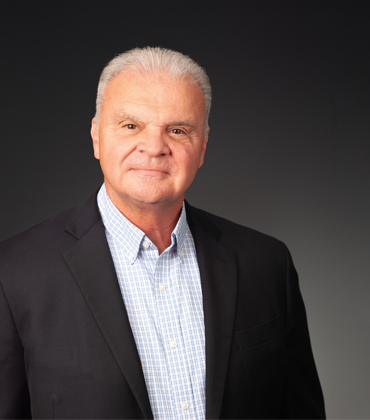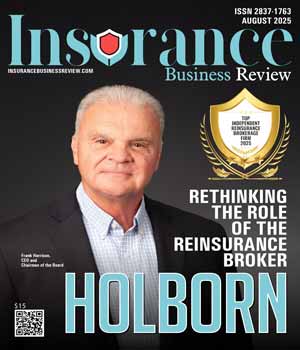Insurance risks no longer follow familiar patterns, and neither can their protection strategies. Climate volatility is reshaping the underwriting lens.
Storms today are no longer linear events with predictable damage patterns. Slight deviations in storm trajectory—say, 20 miles east or west—can drastically alter impact zones, exposing what was previously modeled as a low-risk event. For insurers, this means traditional risk models, built on historical loss averages and regional probability curves, are quickly losing their predictive power. A portfolio that looks insulated on paper can even trigger billion-dollar claims from a single atmospheric anomaly.
In this environment, how do you price and prepare for future risk?
That’s why the role of the reinsurance broker is being redefined. It’s no longer about placing coverage based on precedent. The new mandate is sharper; help carriers see the full extent of their exposure, understand how deep the losses could run and design reinsurance structures to withstand real-world pressure.
It’s not about placing a policy and walking away, it’s about pressure-testing assumptions, refining strategy and making sure the program performs when it matters most
It all begins with advanced catastrophe modeling. Holborn combines commercial and proprietary tools to assess both the likelihood of events and the full severity potential. Their loss scenarios use both deterministic and stochastic models to reveal the realistic, tail-end impact of risk. These analytics go beyond probability by simulating hurricanes, earthquakes, wildfires and other major events.
This approach changes the conversation. It helps insurers answer tough questions, such as: "How much risk can we afford to tolerate?" "Where should we layer protection?" "Would our capital position hold under stress?" And perhaps most importantly: "Does this program still function properly when the risk assumptions are broken?"
 “It’s not about placing a policy and moving on,” says Frank Harrison, chairman and CEO. “It’s about making sure the structure we build performs when the market is strained and the pressure is real.”
“It’s not about placing a policy and moving on,” says Frank Harrison, chairman and CEO. “It’s about making sure the structure we build performs when the market is strained and the pressure is real.”
Once the risks are modeled, the focus shifts to aligning strategy with the changing contours. Whether advising on aggregate limits, regional variance or capital efficiency, Holborn’s goal is to ensure every program stands strong against the unpredictable.
Strategy Built on Continuity
Holborn recognized early on that reinsurance isn’t just about numbers. That’s why it delivers more than coverage. Its reinsurance strategies are adaptive, data-informed and grounded in the kind of long-term thinking that short-term markets can’t replicate.
That perspective comes from more than analytics. It is powered by Holborn’s institutional memory. Reinsurance is still a people business, and being able to recall why a deductible was raised in a hard market, how a layer was originally structured or what rationale guided a program through a previous cycle brings a rare and lasting advantage.
In a sector where turnover is common and most brokers treat each year as a clean slate, Holborn’s continuity stands out.
It revisits the reasoning behind past choices, examines what has shifted and assesses what needs to evolve. It’s not about starting over every time. It’s about building on what’s already been learned.
So when a renewal comes around, it’s treated as a reset rather than a refinement. Whether adjusting retentions after a close call or recalibrating layers in response to updated cat models, every move is shaped by both what came before and where the portfolio is headed. That makes Holborn more than a broker. It is a partner who thinks in cycles, not snapshots.
Relationships that Outlast the Contracts
Communication and consistency matter as much as analytics. That’s why Holborn has built some of the industry’s most enduring partnerships, on both sides of the table.
At its core, Holborn plays two essential roles; a translator and an advocate. Between the U.S. property and casualty insurers and the global reinsurers who support them, it brings clarity to complexity, helping both parties understand the mechanics of a program, as well as the intent and nuance behind it. Reinsurers know that when Holborn brings a client to the table, they are engaging with a partner that has been vetted for underwriting discipline, transparency and long-term alignment.
Relationships like that don’t build themselves. Every year, Holborn facilitates alignment meetings between insurers and reinsurers, providing a structured and intentional platform for open conversations where strategies and performance are discussed.
Because when a clause is stretched or a claim moves into a gray area, it’s the strength of the relationship that decides how quickly resolution follows.
“The science of risk can take you far. But in the end, it’s the art of the relationship that gets the claim paid,” says Harrison.
A relationship-first mindset also guides how Holborn chooses its clients. Over the years, it has established an “ideal client profile,” collaborating with insurers who view reinsurance as a long-term partnership rather than a short-term transaction. These are companies that value open communication and thoughtful strategy. Holborn commits fully to them, staying involved through every market shift and every unexpected event.
Old School Loyalty. New School Edge.
With no outside investors and no pressure to push unrelated services, the focus stays on doing what’s right for the client. Every employee receives equity in the firm, regardless of role or tenure. This means the analyst running catastrophe models and the broker sitting across from reinsurers both have absolute ownership and a shared interest in the outcome.
That’s why collaboration comes naturally. There’s no internal competition for deals or credit. There are no usual handoffs between disconnected teams. People work side by side because the outcome belongs to all of them.
That same mindset carries over into how knowledge is disseminated throughout the firm. Some Holborn professionals have spent decades building the company. Others are just getting started. Connecting them is a culture of sharing experiences. Lessons from past placements, claims and market cycles are passed down through real-time coaching, mentorship and day-to-day problem-solving. The result is a team that moves as one.
Growth Without Noise
Two internal guidebooks anchor Holborn’s vision. The first is ‘The Winning Formula,’ a 40-page internal blueprint that serves as a daily compass for decision-making, distilling the lessons of what to do and what to avoid that have shaped Holborn’s long-term success. The other is ‘The Final Frontier,’ which lays out a strategy to evolve into a true learning organization that self-adjusts, improves and grows without drifting from its core.
Together, these documents form a working framework that shapes how Holborn hires, serves, grows and plans. They remind the firm that staying great doesn’t mean standing still, and that in a fast-changing industry, clarity of purpose is its own kind of advantage.
-
The science of risk can take you far. But in the end, it’s the art of the relationship that gets the claim paid
Growth follows the same philosophy. With offices in New York, Minneapolis and Kansas City, Holborn isn’t chasing expansion. New opportunities are assessed against long-term value for clients, for culture and for its people. If a new market or relationship doesn’t meet its standard for alignment, it doesn’t move forward. That discipline gives Holborn the freedom to adapt without drifting from what it does best.
“We are a comparatively small organization that punches well above its weight in terms of the large clientele that we service,” says Harrison. “But we don’t want to be all things to all people. That’s not what we’re about.”
The Safety Net behind the Rebuild
When disaster strikes, reinsurance rarely makes the news, but its impact is felt in every claim paid, business reopened and house rebuilt. By helping insurers stay resilient in the face of volatility, Holborn plays an essential role in powering communities to recover, economies to restart and promises to be kept when people need them most.
That stability creates room for more than recovery. When insurers can rely on a strong reinsurance program, they can take bolder steps toward prevention, expand coverage to underserved markets and invest in innovations that better serve policyholders. Holborn’s work has a multiplier effect that goes beyond transferring risk to enabling the good that insurance is meant to do.
This public-good mindset informs Holborn’s approach to its role in the broader system. It doesn’t position itself as a vendor. It operates as part of the financial infrastructure that enables long-term resilience for insurers, as well as for the communities and customers they serve.
And because Holborn is selective in its partnerships, it chooses to work with insurers who share that philosophy, where carriers treat risk transfer not just as capital, but as a tool to support continuity and enable long-term resilience.
Holborn’s purpose isn’t measured in attention or headlines. It’s found in the quiet conviction that when reinsurance is done right, it holds up the world around it, leaving a legacy of outcomes that endure long after the storm has passed.
Thank you for Subscribing to Insurance Business Review Weekly Brief




